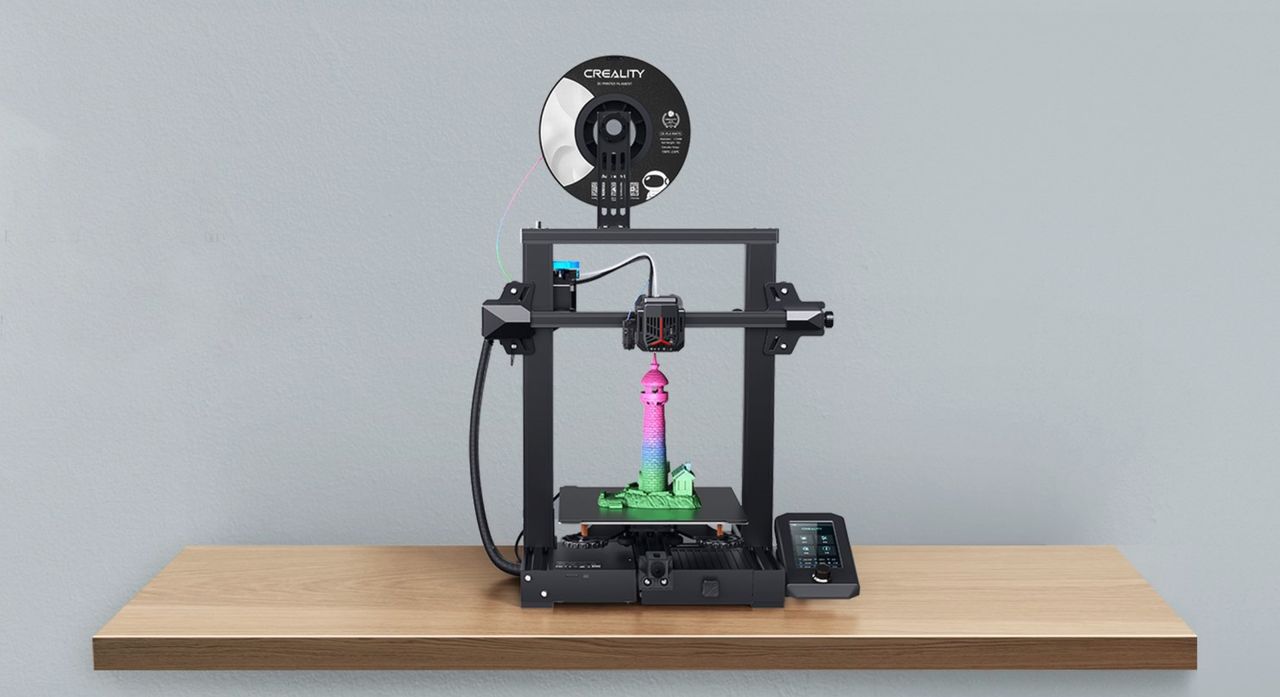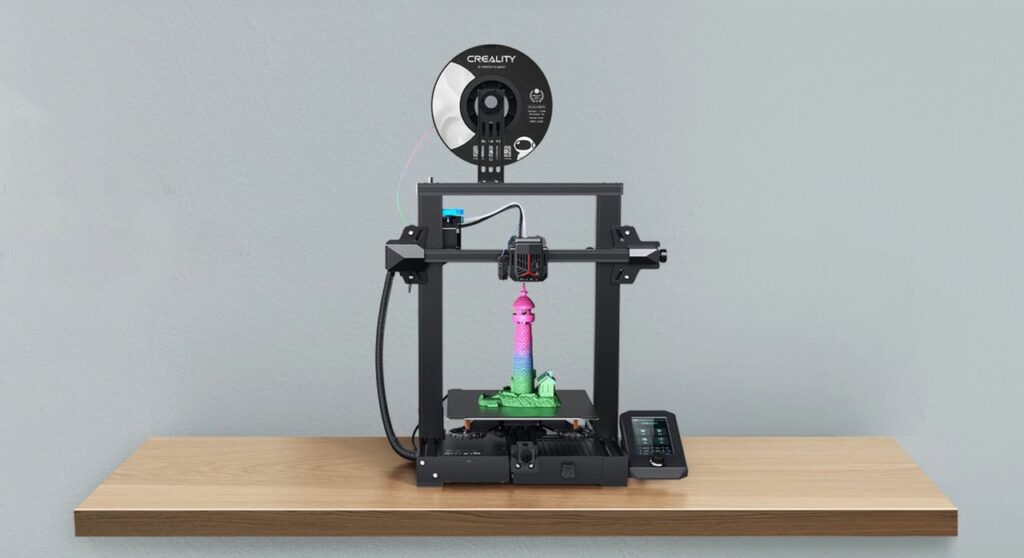
SPONSORED CONTENT
Creality released a sweeping set of announcements that describe multiple new 3D printers and accessories.
The Shenzhen company is most famous for its Ender-3 series of 3D printers that has undergone several upgrades since its first appearance. This week’s announcement includes the latest “Neo” version of the Ender-3 series.
Ender-3 Neo Series
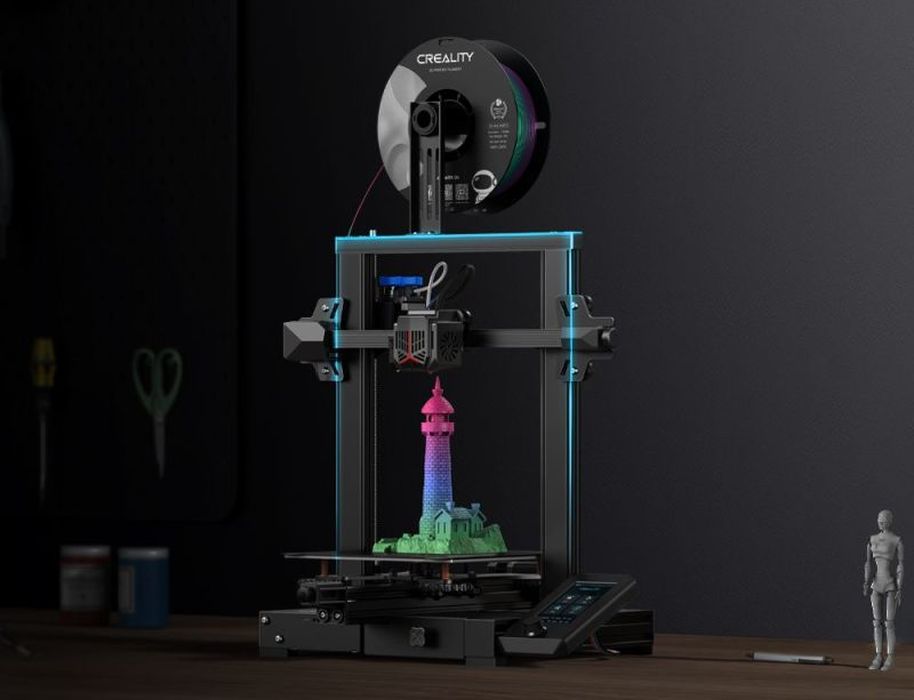
The Ender-3 Neo series is intended to update three prior machines.
The Ender-3 Pro is replaced in the lineup with the new Ender-3 Neo. The machine now includes advanced stepper motor drivers that make operation of the Ender-3 Neo practically silent, and quite suitable for home or office use. The Ender-3 Neo also receives an upgrade on the user interface of the 4.3” color touchscreen that should make it easier for beginners to operate.
Creality has also redesigned the hot end to include a new “wavy-fin” design of the heatsink. This design should cool more efficiently and thereby reduce the possibility of filament jams. The Ender-3 Neo will be priced starting at US$219.
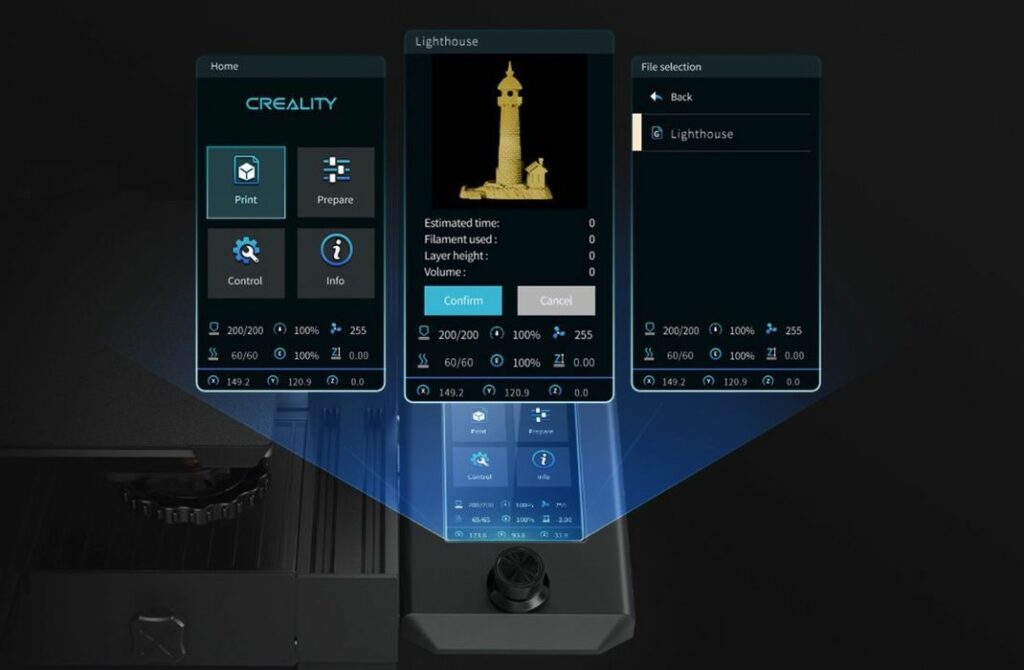
Moving up the line, the Ender-3 V2 was a premium version of the series, and now it is replaced with the new Ender-3 V2 Neo. The Ender-3 V2 Neo also receives the user interface upgrade, which allows operators to visualize 3D prints before launching them. Creality has increased the print speed on the Ender-3 V2 Neo up to 120mm/s, considerably faster than competing models that typically print at 40-80mm/s.
The Ender-3 V2 Neo will be priced starting at US$299.
At the top end of the Ender-3 series was the Ender-3 Max, now replaced with the Ender-3 Max Neo. This device has the largest build volume of the series, a very generous 300 x 300 x 320 mm, able to 3D print quite large objects.
The Ender-3 Max Neo includes dual Z-axis motors that should provide more precise prints. Creality has also upgraded the power supply to 350W, which should be more than enough to run the machine at high speeds. Like the Ender-3 Neo, the Ender-3 Max Neo also includes the new wavy-fin hot end design that will reduce the possibility of filament jams.
The Ender-3 Max Neo will be priced starting at US$369.
Creality said it’s also working on a professional version, the Ender-5 S1, which will include their powerful Sprite extruder and print at higher speeds.
HALOT-RAY 3D Printer
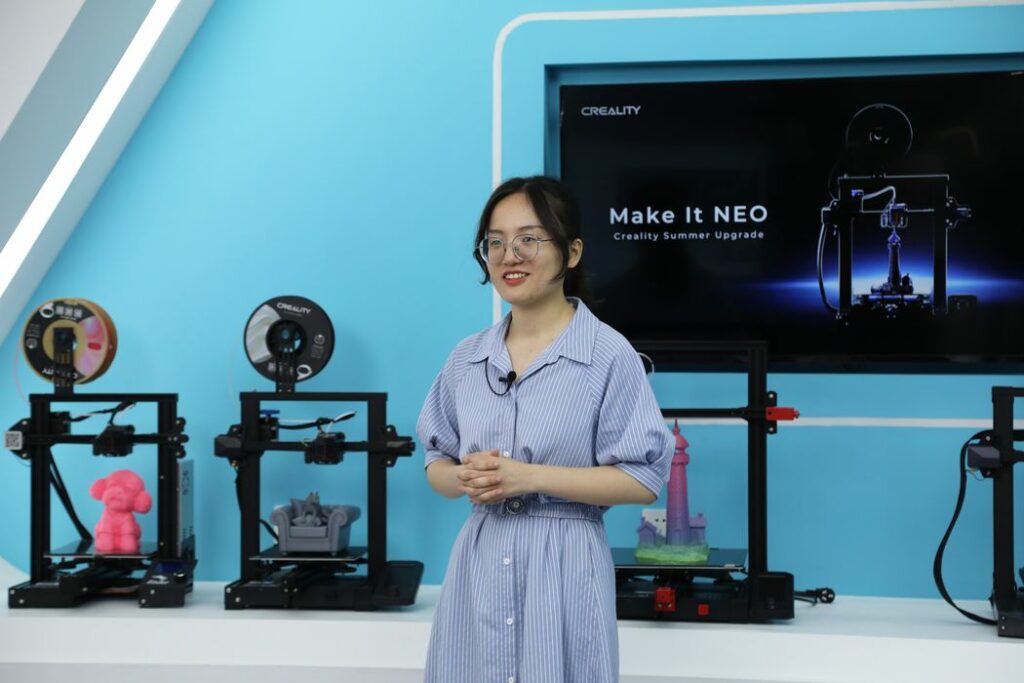
If the Neo series wasn’t enough, Creality has also announced a new resin 3D printer, the HALOT-RAY. The company has been incrementally improving the design of the HALOT series for a couple of years now, and the HALOT-RAY is the latest version.
This device has a rather large build volume because it has a 9.25” LCD screen powering the printing process. There should be no concern about losing fine details at this large size, because the LCD panel has 6K pixels.
Creality has improved the light engine on the HALOT-RAY, which now uses the second generation of their advanced Integral Light Source technology.
For software, Creality also provides HALOT OS, which enables multiple users to remotely connect and operate the HALOT-RAY 3D printer. Like previous HALOT machines, the slicing software is Creality’s own HALOT BOX system.
Klipper on Ender-3 Printers
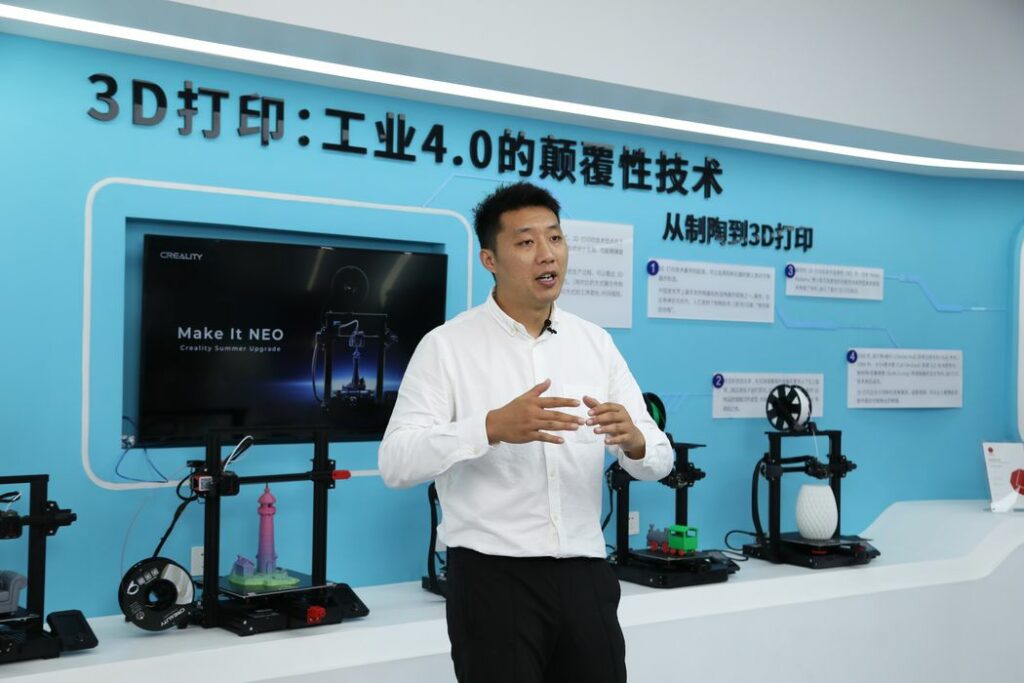
Creality announced the Sonic Pad, which is intended to be a straightforward method to use Klipper software on several models of Ender-3.
Klipper is an alternative to the standard Marlin firmware found on almost every desktop 3D printer. While Marlin runs exclusively on the controller board onboard the 3D printer, Klipper takes a different approach. With Klipper, the functions are split across two places: simplified code runs on the 3D printer controller board to manage the interface to the stepper motors; and secondly more advanced functions are moved to an external computer that is more powerful. The Klipper concept allows more advanced motion system computation to take place, and it can, for example, eliminated ringing due to momentum shifts when printing. It can also enable printing at higher speeds.
The problem with Klipper is that it is tricky to install, particularly for novice 3D printer operators and those without software experience. That’s the problem the Sonic Pad will overcome.
Sonic Pad is a separate unit that takes on the role of hosting the Klipper software, and it can directly interface with the Ender-3 V2, Ender-3 S1 and Ender-3 S1 Pro to implement Klipper functions.
This is quite a good idea by Creality, because it will enable thousands of 3D printer operators to gain much more advanced function from their existing 3D printers.
Other Announcements
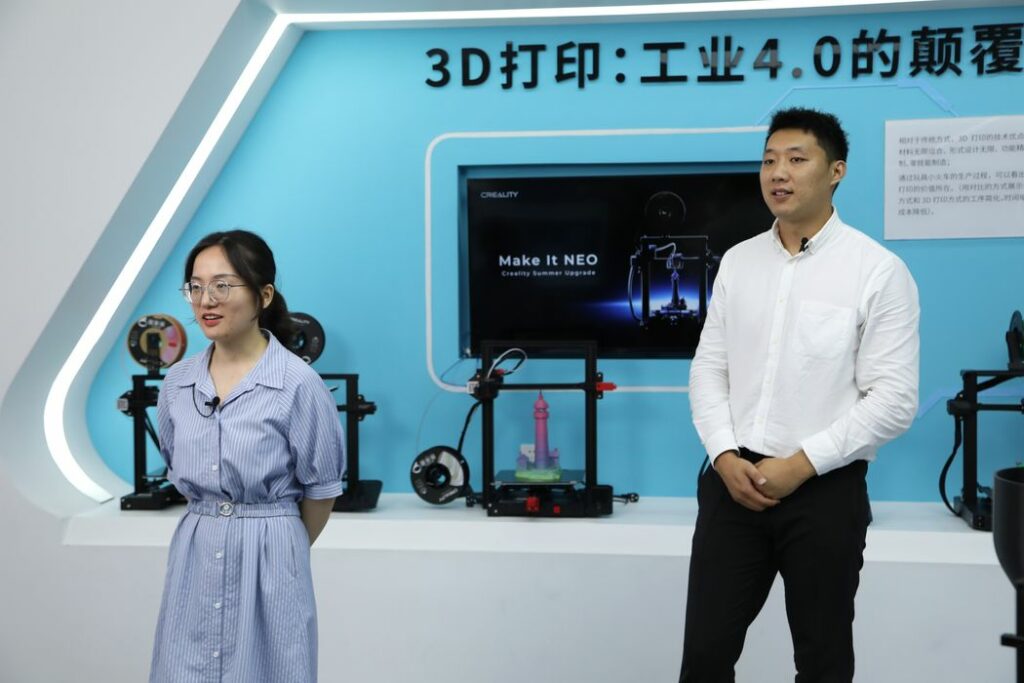
Incredibly, Creality has even more things to announce, including a new version of their Falcon laser engraver, a premium subscription to the Creality Cloud, new 2.0 version of their 3D scanner software, CR Studio, the Spider High-Temperature hot end (300C), a Designer Partnership Program, and a new filament plan.
For complete details, we recommend you watch Creality’s August 5th livestream, where these are all be shown in some detail:

